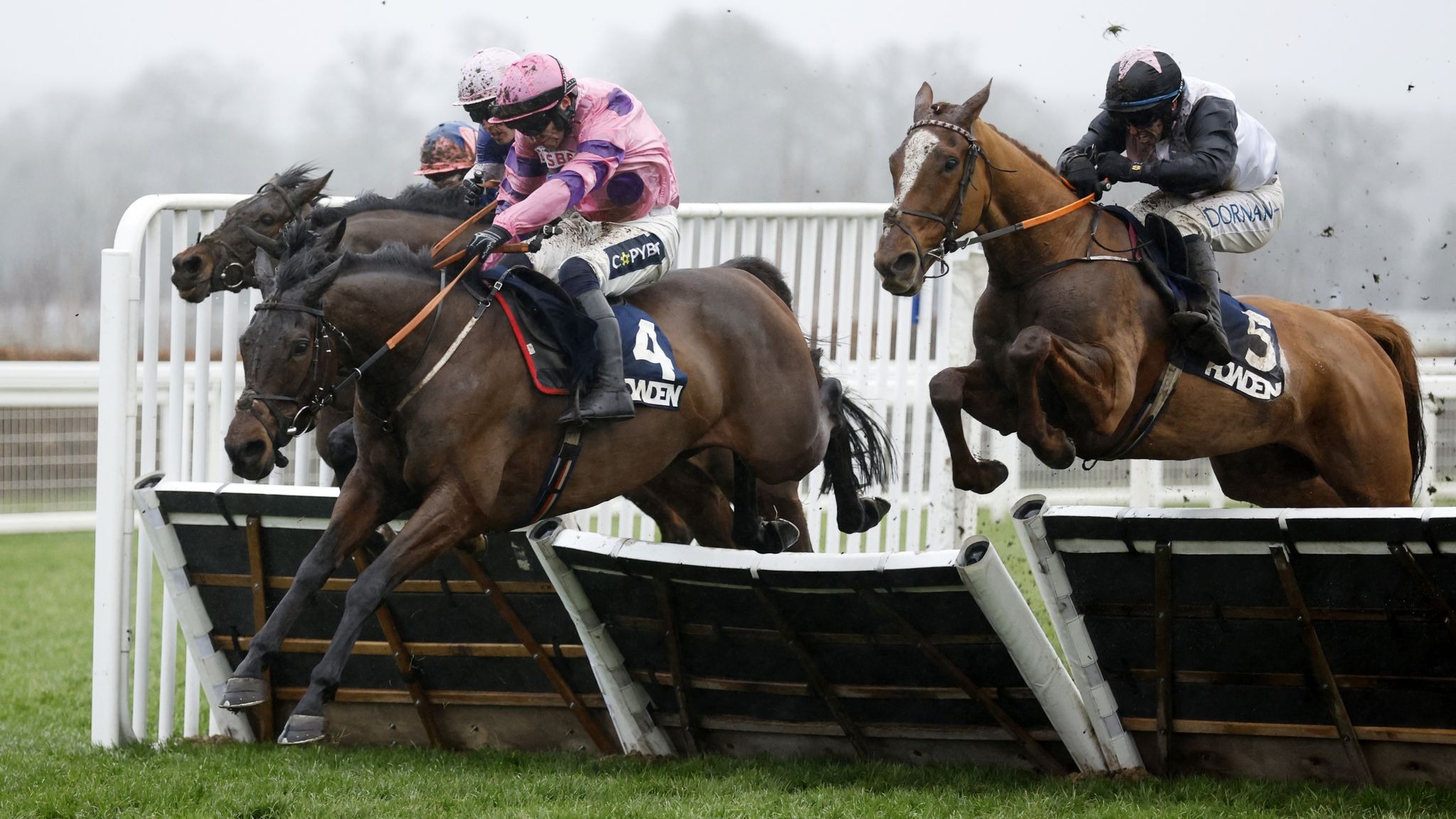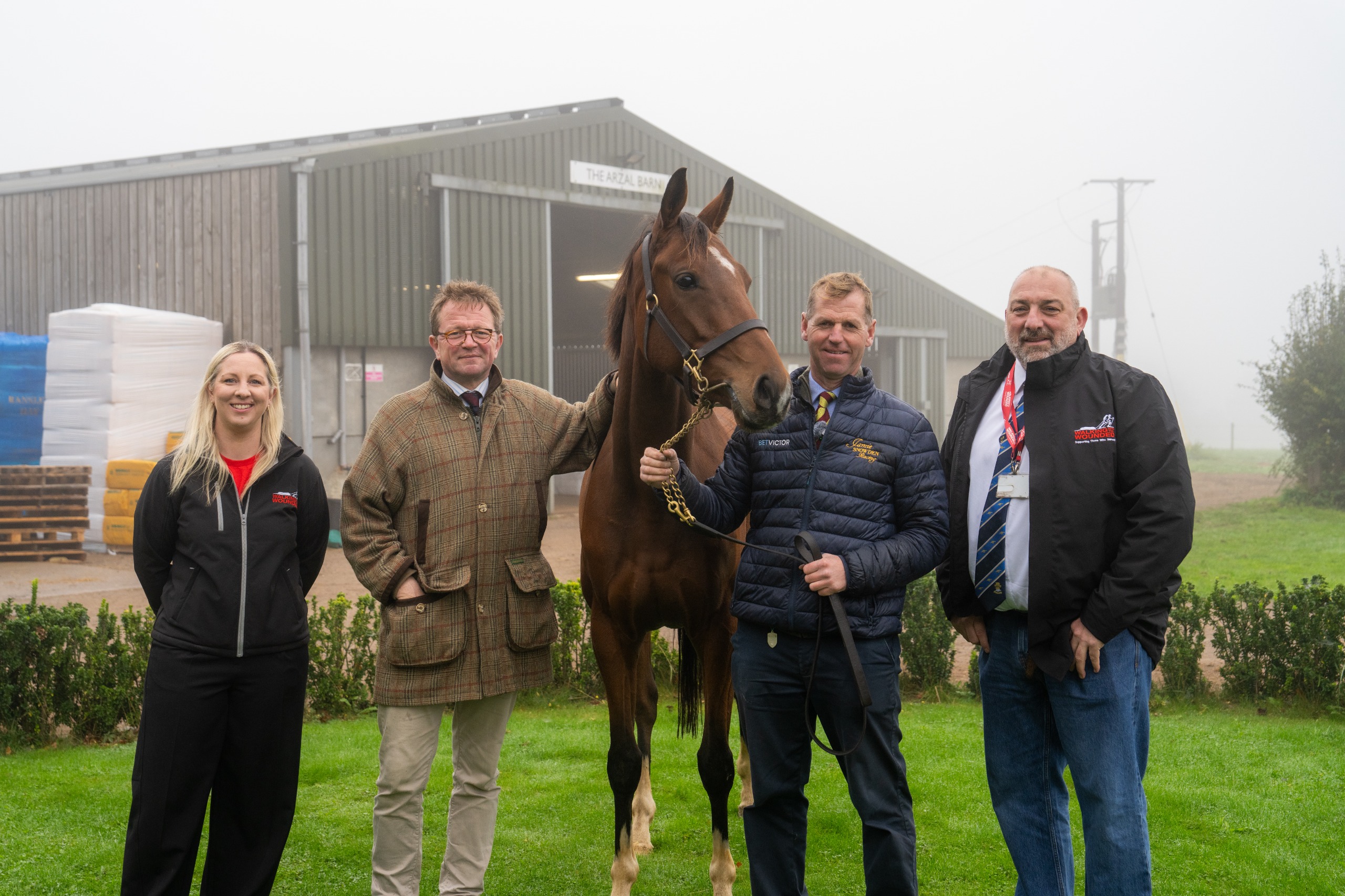Old Gold Racing
June 16, 2022Racing Tack
Horse racing is simple, right? A few fast horses, check, a few brave people on top of them, check.

There’s a bit more to it than that though… including a great deal of very specific equipment, better known as tack. Each individual piece of tack has a purpose and plays a crucial role in ensuring a horse performs to the best of its ability.
We thought we’d take you through the pieces of equipment used in a race, their importance and the benefits of using them.
Racing Tack
Bridle
A bridle is the most important piece of horse racing tack as most of what is needed to control a horse connects to the bridle. A bridle consists of many different parts; these are a headpiece, browband, cheekpieces, throat lash, noseband, reins and the bit.
Saddle
A saddle is used for the rider to sit on whilst riding the horse. Saddles are important because they disperse the rider’s weight more evenly to give the rider sufficient support and control over the horse.
Stirrup Leathers
The stirrup leathers are what connects the saddle to the stirrups. They are a belt-looking strap which means that the stirrups can be positioned correctly depending on how long the leathers are.
Stirrups
The stirrups hang down from either side of the horse and are attached to the stirrup leathers. The rider places their feet in these when riding, they are important for balance and for encouraging horses to quicken.
Girth
A girth is used to hold the saddle in place and stop it from sliding forward or back. The girth connects onto the saddle and loops round underneath the horse’s belly.
An over girth is also used a lot of the time, it serves the same purpose as the girth but acts as a safety measure in case the girth strap breaks or comes undone with a jockey on board. An over girth can also help to hold any loose parts of tack in place so they don’t get in the way or become a safety hazard.
Breastgirth
A breastgirth is another piece of equipment used to prevent the saddle from moving and shifting underneath the jockey. They are looped around the lower neck of the horse and then hooked on to the saddle and made of elastic.
Number Cloth
A number cloth is the piece of cloth inserted underneath the saddle which has the horse’s number printed on both sides so that viewers and the commentary team at a meeting can identify who is who. It is strapped into place.
Weight Cloth
A weight cloth is also placed underneath the saddle for races when horses need to be a certain weight (usually in handicaps). The cloth has pockets for the lead plates to be inserted into by the valets, who will ensure the weight is distributed evenly so that one side of the horse is not heavier than the other. Again, it is strapped into place so that it does not slide off mid-race.
Saddle Pad (non-slip)
A saddle pad is a cushioned piece of material that is put onto the horse’s back to protect it and soften the weight of the saddle so that it is not just a heavy mass directly onto the horse’s spine. The pad also absorbs sweat which can avoid irritation as well as helping to prevent the saddle from slipping.
Chamois
A chamois is another piece of tack used to stop the saddle from slipping. It is a large piece of leather that gets dampened and then placed directly onto the horse’s back to help make everything as secure as possible.
Headgear
Headgear is used to get the very best out of a horse, may that be by using something to keep the horse calm or simply so that they do not get distracted whilst racing. Different types of headgear solve different dilemmas.
Trainers are able to add sheepskin cheekpieces onto the top of these which may benefit an inexperienced or particularly tricky horse. The sheepskin cheekpieces are quite large and cover a lot of the horse’s view to the left and the right, meaning they have no choice but to look forwards and focus on the race.
Trainers can also add a sheepskin noseband to potentially help a racehorse out. If a young horse is running very keenly and throwing their head from side to side in a race then a trainer may add a sheepskin noseband for their next outing to try and settle them. The noseband is a way of helping the horse keep its head carriage down during the race and therefore preserve the energy that they would have been wasting by running freely.
Hood
A hood is used to cover the horse’s ears and head in order to keep them calm. Inside the hood are padded areas which block out sound, meaning those who can get a bit nervous and edgy from the noises of racing and crowds are able to settle down.
Some horses will be seen wearing a red hood, they serve the same purpose as an ordinary hood but are not worn in races. Instead, they are worn before the race in the parade ring and when heading down to the start, however, they are taken off before the start of the race. Trainers may opt for a red hood over a normal hood if they think their horse may not perform to the best of their ability when so calm and relaxed, or, their horse simply only gets agitated before a race and are completely fine once they’re off and racing.
Earplugs
Earplugs block out the variety of, often loud, noises heard at a meeting. This helps to prevent a nervous or edgy horse becoming unsettled in the busy environment.
Blinkers
Blinkers keep the horse looking forwards so that their attention stays focused on the race.
Visor
Visors are simply blinkers that offer the reassurance that a horse is not alone in the race. They have small slits inside them that mean the horse can see they are amongst a field, but not enough to be a significant distraction.
Australian Noseband
An Australian noseband is a piece of rubber that attaches to the bridle to keep the bit in place and high enough in the horse’s mouth to help prevent the horse getting his/her tongue over the bit.
Tongue-Tie
A tongue-tie can make a big difference to how a horse performs during a race. A piece of material (often a stocking, believe it or not) is tied around the horse’s tongue to keep it in place at the front of their mouth (in its natural position). It keeps the airways open helping a horse breathe properly, while also helping to prevent the horse from biting it or swallowing it.

Written by:
Old Gold Racing
Share article:


